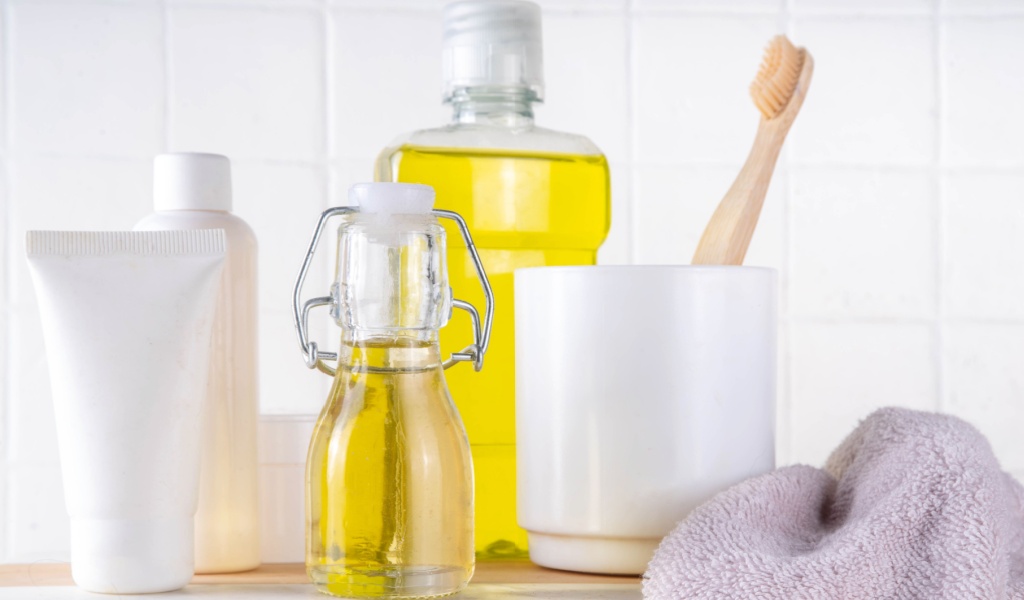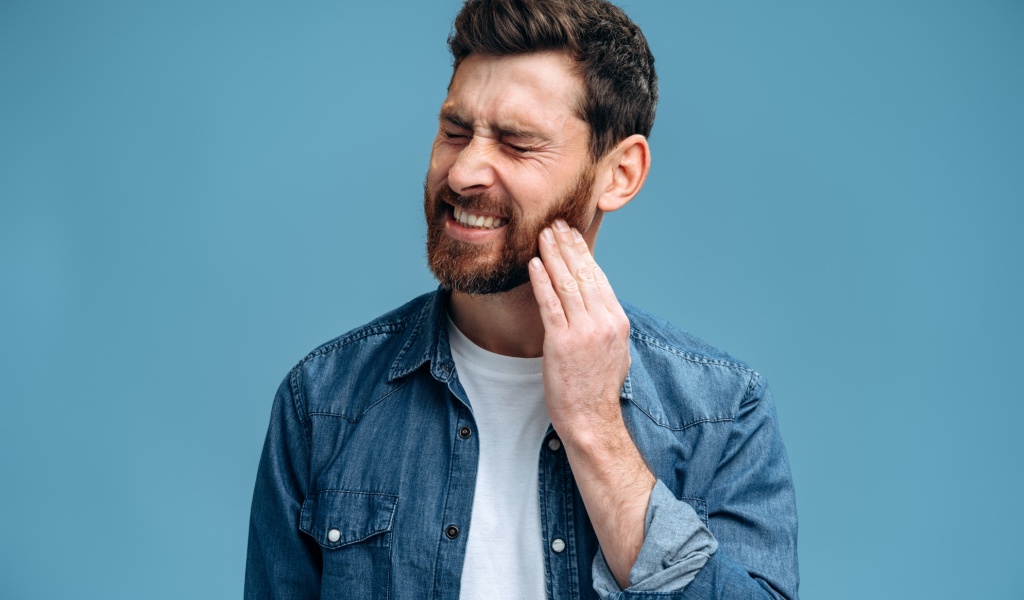If you’ve ever wondered if it’s just you or if your breath always seems to stink, you’re not alone!
Poor oral hygiene is one of the main contributors to bad breath. Naturally, the solution to eliminating bad breath may seem simple: better oral hygiene. But here’s where it gets complicated. It’s not enough to brush your teeth once, twice, or even thrice a day—the stink may still sneak in! While there are several ways to improve oral hygiene, we’re here to explore one technique that is time-tested and proven to work: oil pulling.

What is Oil Pulling?
Oil pulling is an ancient oral hygiene practice that has long been forgotten in the modern world of mouthwashes and teeth whitening. It’s a healthy practice where you swish oil around your mouth for 10 to 20 minutes and then spit it out. Ideally, this process removes toxins, bacteria, and debris from your mouth and body.
The most commonly used oils for this practice are:
- Coconut oil is known for its antibacterial and antifungal properties.
- Sesame oil is believed to strengthen the teeth and gums.
- Sunflower oil is less commonly used than the other two because it is believed to be less efficient than coconut and sesame oil.
How Does Oil Pulling Work?
The mouth is home to many different types of bacteria. Most of these bacteria are harmful, contributing to plaque buildup, bad breath, and cavities. When oil is swished in the mouth, it binds to dangerous bacteria and plaque stuck on the teeth and gums, even penetrating hard-to-reach places like between the teeth. The bacteria mix with the oil and are extracted when it is spat out after around 10 to 20 minutes of swishing.
- Many of these toxins are more soluble in oil than in water. Therefore, oil pulling is a more effective cleanser than water or mouthwash.
- Oil Pulling is an excellent choice for those who suffer from plaque and tartar buildup. It reduces plaque formation by helping to remove the sticky film of bacteria coating the teeth.
- Additionally, unlike alcohol based mouthwashes that can dry out your mouth, oil pulling hydrates and nourishes the gums, reducing inflammation and irritation.
Proven Benefits of Oil Pulling
Reduces Harmful Bacteria In The Mouth
One of the main reasons for cavities and bad breath is the presence of harmful bacteria. Studies have shown that oil pulling can significantly reduce the number of bacteria in the mouth.
Strengthens Teeth
Cavities occur when bacteria break down food particles, producing acid that erodes the enamel. Oil pulling helps reduce bacteria, lowering the risk of tooth decay. Furthermore, coconut oil contains calcium and vitamin D, which help strengthen teeth naturally.
Fights Bad Breath
An excellent solution for those who struggle with bad breath is to follow the oil pulling method effectively. Lousy breath, often caused by bacteria on the tongue and gums, can be eliminated as oil pulling reaches places that a toothbrush wouldn’t and cleans the mouth efficiently.
Natural Teeth Whitening
Many people have claimed that oil pulling whitens teeth. This may be possible because it removes stains from food, coffee, and tea over time.
Reduces Gum Inflammation And Bleeding
Gum inflammation is caused by plaque buildup along the gum line. Common symptoms include swollen, red, and bleeding gums. Oil pulling helps reduce plaque and prevent gum inflammation.

How to Do Oil Pulling
After reading this article, you may be excited to learn how to do oil pulling. Let’s explore some simple steps:
Step One: Take one tablespoon of coconut, sesame, or sunflower.
Step Two: Swish the oil around your mouth for 15 to 20 minutes. Move it between your teeth and gums. Avoid swallowing it, as this process removes bacteria and other toxins. For beginners, try five minutes first, then gradually increase the time.
Step Three: Spit the oil into the trash can. Do not spit into the sink; the oil can clog the drains.
Step Four: Rinse your mouth with warm or salt water to remove any residue.
Step Five: Brush your teeth as usual.
Side Effects of Oil Pulling
Oil pulling is generally safe, but there are some things to remember when intending to try this ancient method. First, you might feel uncomfortable trying it for the first time, so start with a shorter swishing duration. Next, do not clog the drain by spitting the oil into the sink; this can become a significant hassle. Finally, oil pulling could tire your jaw if you swish for too long.
Does Oil Pulling Replace Brushing?
Absolutely not! Oil pulling is an excellent addition to oral care but should never replace brushing and flossing. Brushing removes plaque and food debris more effectively, while flossing cleans between teeth.
Conclusion
Oil pulling is a natural practice that offers several benefits, including decreasing bacteria, freshening breath, and strengthening gums. However, it must be used alongside brushing and flossing for the best results. This chemical-free method is worth trying, though it takes time to see noticeable results.



